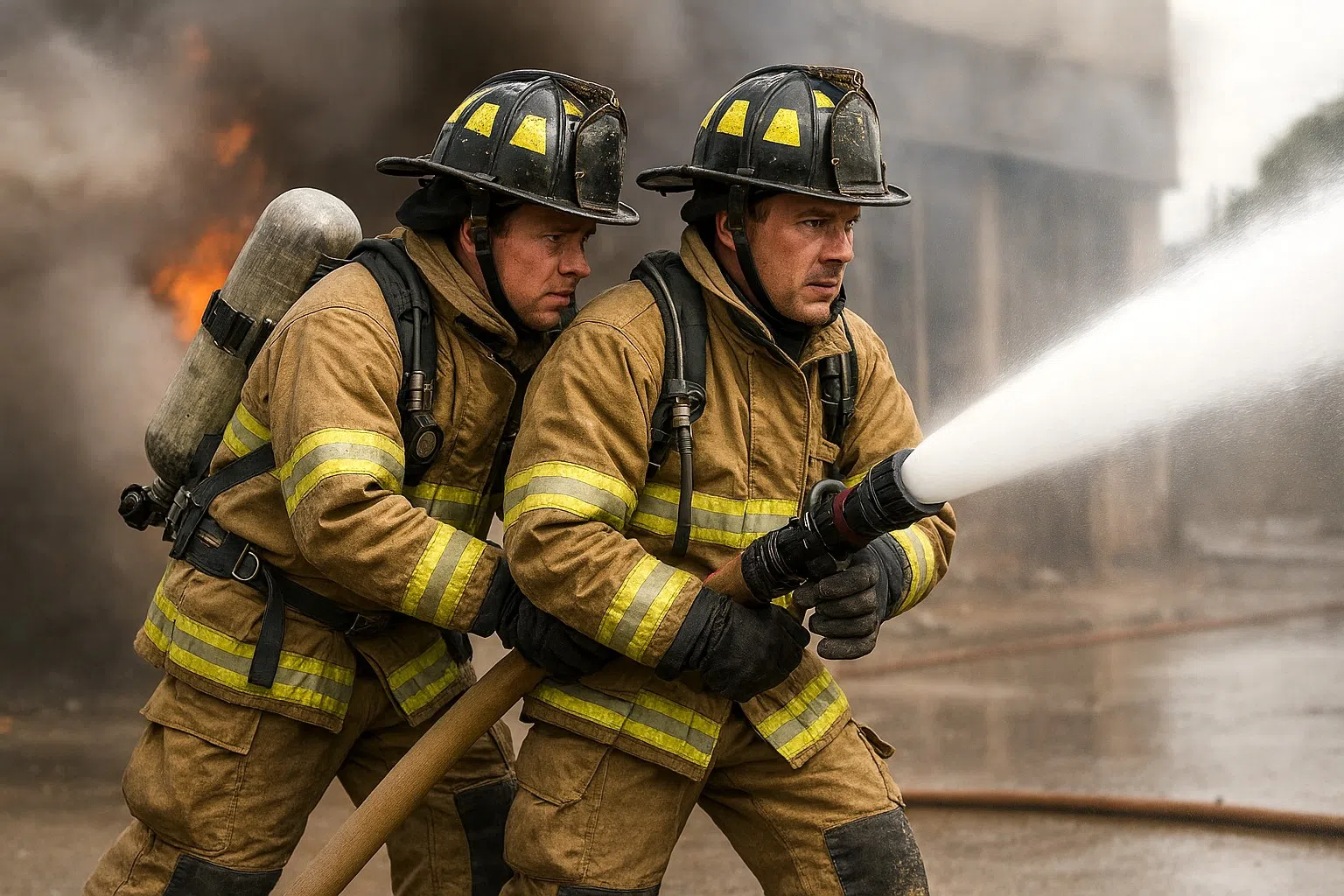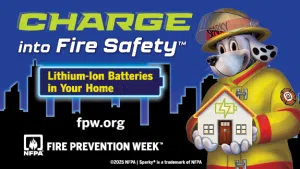
Northumberland leaders are calling on residents to “charge into fire safety” with them during Fire Prevention Week.
This Sunday, Oct. 5 to Saturday, Oct. 11 marks Fire Prevention Week, and this year’s theme centres on lithium-ion batteries in your home.
Fire officials say all residents can do their part to help out first-responders – and ultimately, to keep themselves and loved ones safe.
Ensuring lithium-ion products are used in a safe manner is critical, explains Brian Buchanan, a fire inspector with the Municipality of Trent Hills and president for the Northumberland County Fire Prevention Officers Association.
So where should people start?
When buying products using a lithium-ion battery, take your time to research it – and that’s not all, notes Buchanan.
These stamps are from nationally-recognized testing labs, which means products meet important safety standards.
Brighton Fire and Rescue is among local departments teaming up with the National Fire Protection Association to tackle this year’s educational campaign, which is zeroing in on how important it is to buy, charge and recycle lithium-ion batteries safely.
“Everyday devices in our homes, including smartphones, tablets, laptops, e-cigarettes, headphones, power tools, lawn equipment and toys, often rely on lithium-ion batteries,” explains Chief Gene Thompson. “Almost anything that can be recharged uses this type of battery.”
And if they’re damaged or handled improperly, these batteries can overheat, cause fires or even explode, note officials.
Lithium-ion batteries store a large amount of energy in a small amount of space – and like any product, a small number of these batteries can also be defective, leading to overheating issues or fires, adds Buchanan.
So what can the everyday person do?
Simple steps like charging devices safely add up, note officials.
This means using original manufacturing equipment (OEM) like cables and chargers that come with products that have been tested and designed for specific products, and following manufacturers’ instructions, explains Buchanan.
As more devices roll out with these batteries – and amid increasing emergency-related calls and incidents – area leaders want residents to know how to protect themselves and others.
That also means safe disposal is key.
The call2recycle.org website helps people anywhere find recycling spots close by
Just like lithium-ion batteries can pose a risk in the home if unsafely used, they can also pose a danger at recycling centres, in waste disposal trucks or landfills or for waste collectors if not properly disposed of (and there have been local incidents.)
Simply put, these batteries are considered household hazardous waste, and taking these measures can help prevent injuries or explosive fires. Modifying or tampering with such equipment is also a no.
What else should people know? Buchanan has you covered with a few more tips.
Under additional safe charging tips, Thompson adds this also means not overcharging devices – unplug or remove batteries when equipment is fully charged.
Fire services across Northumberland are also continuing to urge residents to make sure smoke alarms and carbon monoxide detectors are working in homes. Batteries should be replaced at least once a year – although, local officials recommend replacement twice yearly and keeping an eye on expiration dates for alarms.
Heating season is just around the corner so make sure appliances are top-notch and not emitting CO and those carbon monoxide detectors are in the right places and working, stresses Buchanan.
“Now having all those safety devices in your home is key, but having a home fire escape plan is also crucial,” adds Buchanan.
This means families have a plan in place to get out in case of a fire or emergency and practising that plan – it just makes dealing with those emergencies much more manageable, stresses Buchanan.
Residents can learn more about the “Charge into Fire Safety: Lithium-Ion Batteries in Your Home” campaign online – and departments across the county will have individual canvassing efforts coinciding with the educational initiative.
(Written by: Sarah Hyatt)

